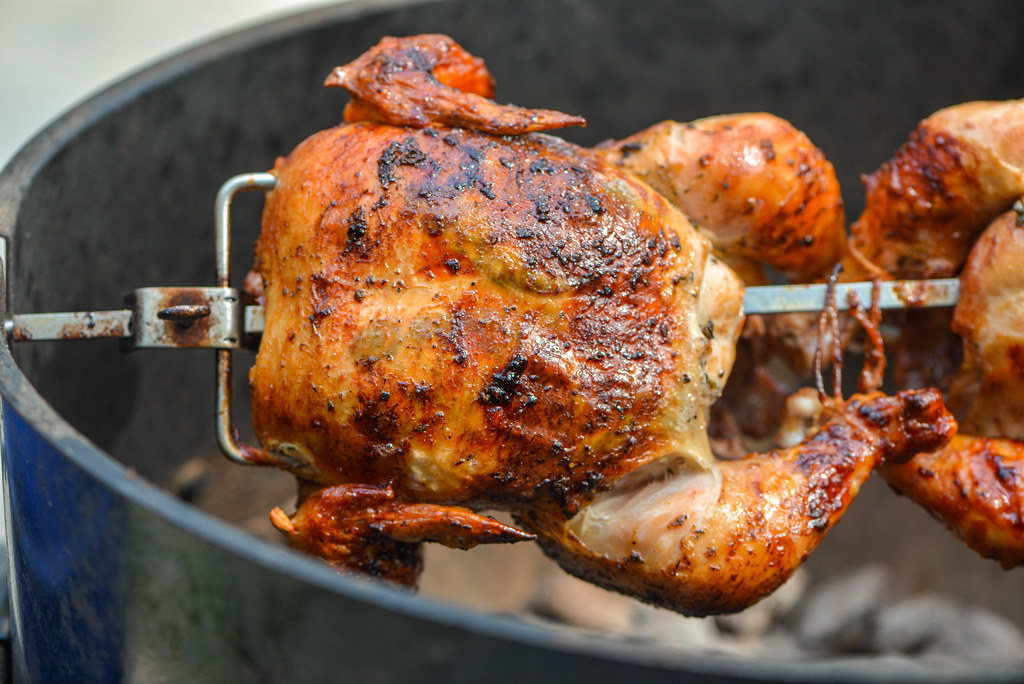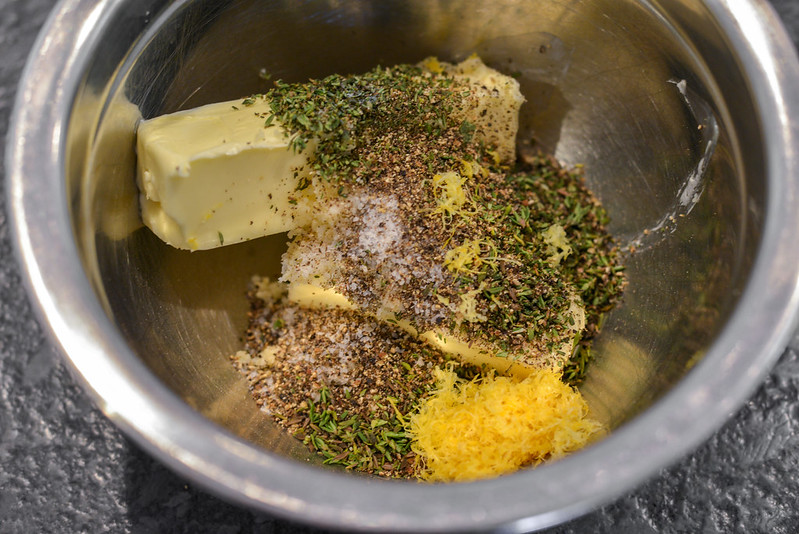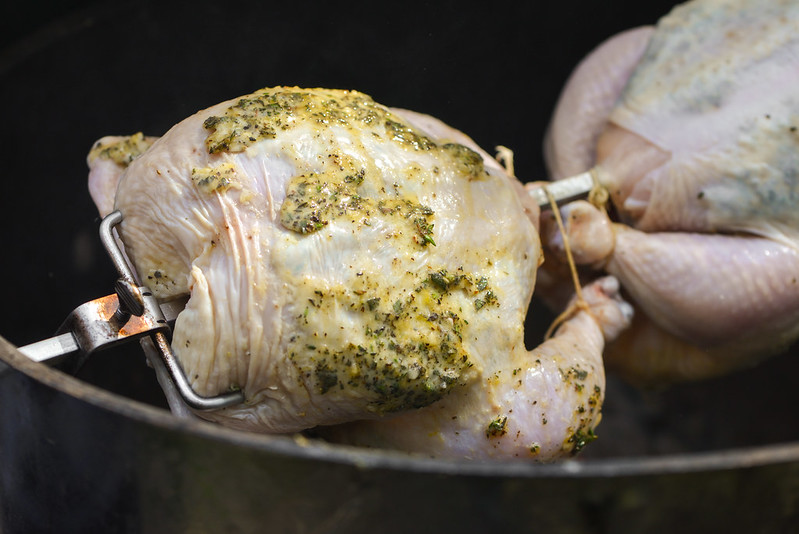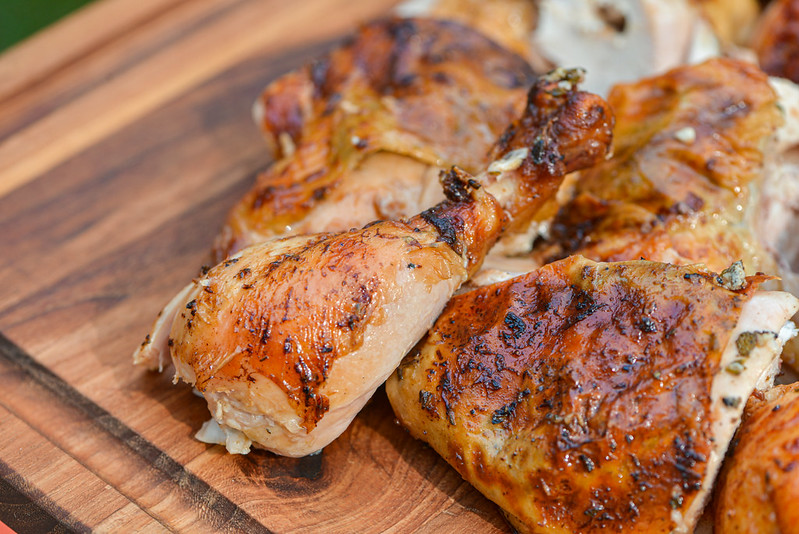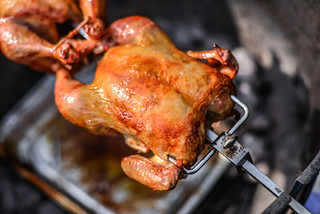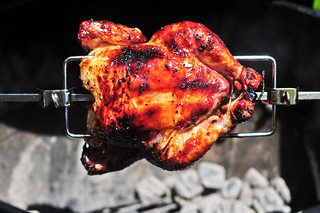Garlic & Herb Rotisserie Chicken
I've seen a theme is forming in my recipes over the past few months, and that's a return to the old days. I seem to be picking up a lot of things I was super into earlier on in my recipe development years, but have more-or-less let fall to the wayside in recent times, like meat and veggie rolls and now rotisserie chicken. In general, I haven't been utilizing my rotisserie much at all, and that's a shame because it can be superior way to cook many things—nothing else is quite like that constantly basting action which heightens flavor in pronounced ways. This is the process that can render a ho hum chicken into something of true glory, and I do contend some of the best birds I've had in my life have been cooked on the spit. That held even more true with this garlic and herb rotisserie chicken, which had all that excellent chicken flavor plus added bonuses.
Utilizing compound butters is also something not seen in my recent recipes, so it seemed like a good idea to pair it up with a return to the rotisserie as well. There's nothing revolutionary in the butter I put together here and I kept things simple with a mixture of herbs and garlic to deliver on the two primary promises of this recipe, then also added in lemon zest, black pepper, and salt.
After whipping up the butter, carefully slid my finger between the skin and meat of the chicken in multiple points to create areas to spread the butter in. I applied most of the compound butter underneath the skin, and then what was leftover, I tried spreading over the surface, which worked well enough on one bird, but failed on a second. This isn't something I do all that often anymore as I find when I want something to adhere to the exterior of poultry, mayonnaise is more a effective medium for doing so than butter since it sticks and spreads more reliably.
To cook the birds, I started a three-zone fire where a full chimney of lit charcoal was spread into two equal piles of coals on either side of the charcoal grate. This created a medium-hot fire with no direct heat right underneath the chicken itself. I used to place a foil pan between the coals to catch the rendering fat to help keep things clean, but with an aging grill and the fat never translating into that much of a mess, I've dropped using the pan and creating unnecessary waste.
While cooking, I occasionally basted the chicken in with a butter and lemon mixture, and once the exterior started to develop a medium-brown hue, I began to monitor the internal temperature in the breast and thighs. I currently shoot for an internal temperature between 145-150°F in the thickest part of the breast. While that's shy of the FDA recommended standard, allowing a ten minute rest before consuming provides enough time for destruction of the harmful bacteria that die almost instantaneously at 165°F, which how that federally recommended number was chosen. Cooking to lower temperature and the resting longer delivers on the safety concerns as well as outputs consistently juicier meat, so it's how I've been cooking my chicken for years now.
Getting back to cooking methods and ideas I've been ignoring for a long time now has reminded me why I was so into them previously, and this chicken had such a deep and amazing flavor that I was left kicking myself for not making rotisserie birds more regularly. That rendering chicken fat, which becomes a self baste, left the skin with an immense flavor whose intensity was heightened but the herb and garlic butter. When the skin is this good, I often divorce it from the meat and leave it until the end so it will be my last bite, but that meat really held its own in this recipe too. Again, there's a lot to thank for the butter here for the extra richness that made it also a joy to eat. Now that I got a rotisserie bird out of the way, I feel like the summer of 2023 is going to center my rotisserie more than usual for all different types of meats to really bring this important cooking tool back into the fold.
